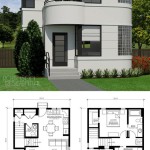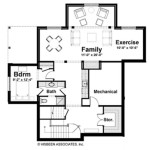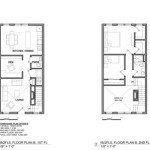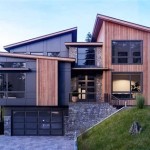Farm House Plans With Porches: Creating A Natural Homestead
The allure of a farmhouse evokes images of tranquility, open spaces, and a connection to the land. Integrating a well-designed porch into farmhouse plans elevates this appeal, creating a natural homestead that seamlessly blends indoor comfort with the beauty of the outdoors. Porches serve as transitional spaces, offering areas for relaxation, social gathering, and practical functionalities. This article explores the significance of porches in farmhouse designs, highlighting how they contribute to the overall aesthetic and functionality of a natural homestead.
Farmhouse architecture traditionally emphasizes functionality and simplicity, reflecting the practical needs of rural living. Porches, in this context, are not merely decorative elements but integral components that enhance the usability and enjoyment of the home. They provide protection from the elements, extend living spaces, and offer opportunities to connect with the surrounding environment. The integration of porches into modern farmhouse plans preserves this heritage while incorporating contemporary design principles.
The design of farmhouse porches varies widely, reflecting different regional styles and individual preferences. Common features include wide, open verandas, screened-in enclosures, and wrap-around designs. The choice of materials, such as wood, stone, and brick, further influences the porch's aesthetic and durability. Ultimately, a well-conceived porch enhances the character of the farmhouse and contributes to a cohesive and inviting atmosphere.
Key Points to Consider When Integrating Porches into Farmhouse Plans:
Designing a farmhouse with a porch requires careful consideration of several factors. These include the porch's intended use, its orientation relative to the sun and prevailing winds, and its connection to the surrounding landscape. Addressing these considerations ensures that the porch is both aesthetically pleasing and functionally effective.
1. Porch Size and Configuration
The size and configuration of a farmhouse porch should be determined by its intended use and the overall scale of the house. A small, covered entry porch may suffice for simple weather protection, while a large, wrap-around porch provides ample space for outdoor living and entertaining. The depth of the porch is also crucial; a deeper porch offers more protection from sun and rain and allows for comfortable furniture placement. The configuration should also consider accessibility, ensuring that it is easily accessible from both the interior of the house and the surrounding yard.
For instance, a family that frequently entertains might opt for a large, open porch with ample seating and dining space. This type of porch could also include a built-in outdoor kitchen or bar area. In contrast, a smaller family might prefer a more intimate porch with comfortable seating and a swing. The size and configuration should also be proportionate to the house; a porch that is too large or too small can detract from the overall aesthetic appeal.
The placement of support columns and railings is another important consideration. Columns should be spaced appropriately to provide structural support without obstructing views or creating a cluttered appearance. Railings should be designed to meet safety standards while complementing the overall style of the farmhouse. The use of traditional materials, such as wood or wrought iron, can enhance the rustic charm of the porch.
2. Material Selection and Durability
The choice of materials for a farmhouse porch significantly impacts its aesthetic appeal and long-term durability. Traditional materials such as wood, stone, and brick are commonly used in farmhouse construction, offering a natural and timeless look. However, it is essential to select materials that are appropriate for the local climate and resistant to weathering. Pressure-treated lumber, composite decking, and durable stone are excellent choices for porch flooring and structural elements.
Wood is a popular choice for porch construction due to its natural beauty and versatility. However, it requires regular maintenance to prevent rot, decay, and insect infestation. Pressure-treated lumber is a cost-effective option that offers enhanced resistance to these issues. Composite decking is another excellent choice, as it is low-maintenance, durable, and available in a variety of colors and textures.
Stone and brick are ideal materials for porch foundations, columns, and accent walls. They offer a timeless aesthetic and require minimal maintenance. Natural stone, such as flagstone or river rock, can be used to create a rustic and textured look. Brick provides a more formal and refined appearance. The choice of materials should complement the overall style of the farmhouse and the surrounding landscape.
3. Integration with the Landscape
A well-designed farmhouse porch should seamlessly integrate with the surrounding landscape, creating a natural and harmonious transition between the indoors and outdoors. This can be achieved through careful planning of landscaping elements, such as trees, shrubs, and flowers. The porch can serve as a focal point in the landscape, connecting the house to the garden and creating a sense of place.
Consider planting trees and shrubs that provide shade and privacy for the porch. Deciduous trees are a good choice, as they provide shade in the summer and allow sunlight to reach the porch in the winter. Vines, such as wisteria or honeysuckle, can be trained to grow on porch columns or railings, adding a romantic and natural touch. Flowers and potted plants can be used to add color and texture to the porch, creating a welcoming and inviting atmosphere.
The placement of the porch should also consider the natural topography of the land. A porch that is built on a raised foundation can offer panoramic views of the surrounding landscape. A porch that is nestled into a hillside can create a more intimate and secluded space. The design should work with the existing landscape, rather than trying to force it into a particular shape or style.
Incorporating natural elements, such as stone pathways and water features, can further enhance the connection between the porch and the landscape. A stone pathway leading from the porch to the garden can create a sense of exploration and discovery. A small water feature, such as a fountain or pond, can add a soothing and relaxing element to the space. These details can transform the porch into a true extension of the natural environment.
Furthermore, consider the impact of lighting on the porch and its surroundings. Soft, ambient lighting can create a warm and inviting atmosphere, making the porch a pleasant place to spend time in the evening. Path lighting can illuminate walkways and highlight landscaping features, enhancing the beauty of the yard at night. The lighting should be carefully chosen to complement the overall style of the farmhouse and the surrounding landscape.
In summary, creating a natural homestead with farmhouse plans incorporating porches involves careful planning and attention to detail. The size and configuration of the porch, the choice of materials, and the integration with the landscape are all crucial factors to consider. By addressing these considerations, one can create a porch that is both aesthetically pleasing and functionally effective, enhancing the beauty and enjoyment of the farmhouse.
Beyond these key points, several other considerations can contribute to the success of a farmhouse porch design. Attention to detail in the selection of hardware, such as door handles, hinges, and lighting fixtures, can enhance the overall aesthetic. The use of reclaimed or salvaged materials can add character and charm to the porch, reflecting the farmhouse's connection to the past. The incorporation of sustainable design principles, such as rainwater harvesting and passive solar heating, can further enhance the porch's environmental performance.
Ultimately, the goal is to create a porch that is a true extension of the home, a space where one can relax, entertain, and connect with the natural world. A well-designed farmhouse porch can transform a simple house into a natural homestead, a place where one can find peace and tranquility in the heart of the countryside

Harvest Farmstead Modern House Open Plan Design 60 X 30 3 Bed 2 5 Bath Drawings Blueprints

Pendleton House Plan Most Popular Modern Farmhouse Home Design Main Floor Primary Mf 2639

Modern Farmhouse Plans Barn Style Home Design

Homestead Hill Modern Farmhouse Plan 091d 0534 House Plans And More

Farm House Plans For Today

Colorado House Plan Two Story Popular Rustic Farmhouse Home Design Mf 3713

Farmhouse Range Of Home Designs The Rural Building Co

Natural Freedom House Plan Beautiful Besting Barn Mb 3247

21 Beautiful And Functional Single Level Country House Plans Quail Creek Homestead

Four Porches House Plan Southern Living Plans
Related Posts








